ARFF Daily News
Published on:
Thursday the 2nd of May, 2024
Plane crashes near Daniel Field in Augusta, coroner called to scene
by: D.V. Wise
AUGUSTA (WJBF) – A plane has crashed near Daniel Village in Augusta.
NewsChannel 6 has several employees that heard the crash and are on or near the scene.
We can confirm that it happened at 2802 Hillcrest Avenue and that is was a private Cessna plane, NOT a commercial aircraft.
The Richmond County Sheriff’s Office says a single engine plane took off from Daniel Field and was returning to the airfield when it struck a tree and crashed.
The FAA has been notified and are en route to the scene.
They will be in charge of the investigation.
Please avoid the areas of Hillcrest Ave and Belmont Rd at this time.
The coroner is on the way to the scene.
NewsChannel 6’s Brad Means and Barclay Bishop are giving a live report on the NewsChannel 6 Facebook Page.
https://www.wjbf.com/csra-news/plane-crashes-near-daniel-field-in-augusta/
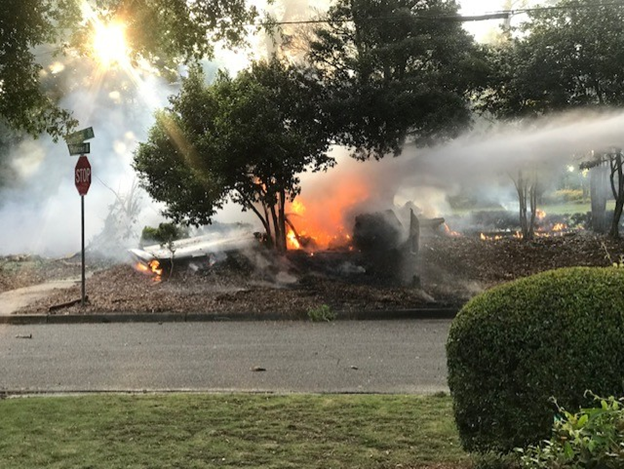
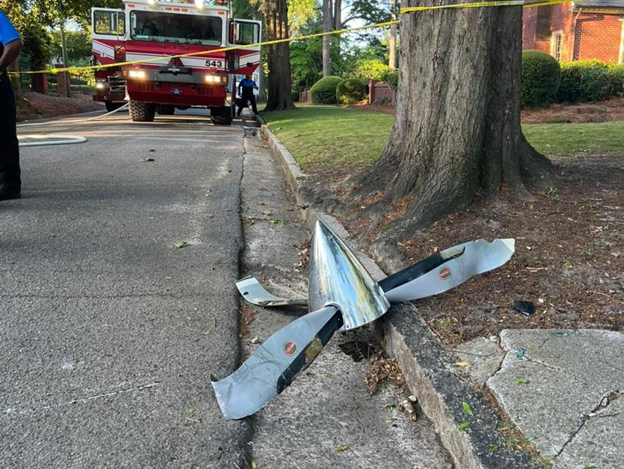
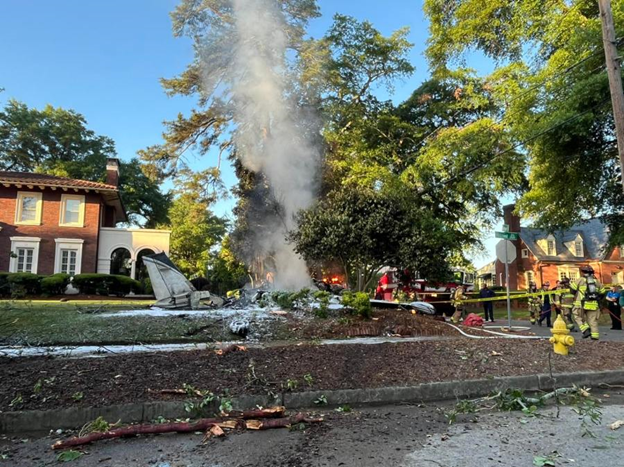
Satena plane loses tire during takeoff at San Andrés Airport
Agenciapi.co
A worrying incident occurred this Wednesday, May 1, at the San Andrés airport when a Satena airline plane, loaded with passengers, lost the front tire of its landing gear during the takeoff maneuver, which caused an immediate emergency response.
The Civil Aeronautics of Colombia confirmed that, as a result of the incident, the air terminal has been temporarily closed due to the obstruction caused on the runway.
A witness at the scene shared on social media that the incident occurred "just when we were going to take off, thank God it was on the ground."
At this time, no injuries have been reported among passengers or crew, who were safely evacuated from the plane. Civil Aeronautics and emergency services are working to remove the aircraft and clear the runway as soon as possible.
Authorities are investigating the causes of the incident, while the airline Satena has not yet issued an official statement.
https://www.msn.com/es-co/noticias/nacional/avi%C3%B3n-de-satena-pierde-llanta-durante-despegue-en-el-aeropuerto-de-san-andr%C3%A9s/ar-AA1nZhlO

Runway reopens after plane overruns landing at St. John’s International Airport, no injuries reported
By Web Team
The Transportation Safety Board has concluded its preliminary work at St. John’s International Airport after a charter plane overran the runway this afternoon.
The aircraft has been safely removed and the runway has been re-opened. The airport authority says it does not anticipate any further operational delays related to this incident. Passengers are asked to check with their respective airline
There were delays at St. John’s International airport after a PAL Airlines charter flight overshot the runway late this afternoon.
NTV News contacted PAL Airlines and they issued this statement. “After landing at St. John’s (CYYT), a PAL Airlines charter flight departed the edge of the runway just prior to the aircraft coming to a complete stop. The PAL team met the flight, passengers disembarked the aircraft and went to our charter facility to meet their awaiting ground transportation.”
Update from 5:13 PM NDT
The TSB (Transportation Safety Board) is deploying two investigators to St. John’s International Airport to investigate a runway overrun that occurred earlier today, involving a De Havilland DHC 8-400 aircraft operated by PAL Airlines.
https://ntv.ca/plane-overshoots-runway-at-st-johns-international-airport-no-injuries-reported/
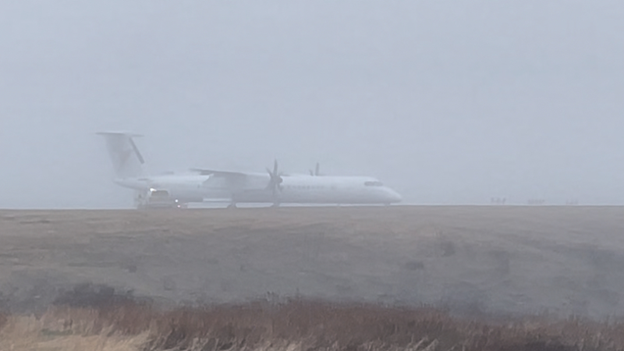
Pilot, passenger escape injury after small plane makes emergency landing on Long Island beach
By Katherine Donlevy
A pilot and his passenger escaped uninjured Wednesday after their plane made an emergency landing on a Long Island beach — the second time the aircraft was involved in such a situation in eight years.
Video posted to social media shows the single-engine Cessna 152 gliding over the small strip of sand at Cedar Beach in Mt. Sinai just as the sun was setting over the horizon.
The plane landed safely on the sand and continued on for several seconds before the nose of the aircraft dipped into the sand, exposing the aircraft’s underbelly.
Despite the scare, the 60-year-old pilot and his passenger, 59, walked away without any injuries, according to ABC 7.
The duo had reported engine failure just before landing on the Suffolk County beach.
The controlled crash landing is the second time the plane was forced to come down on a Long Island beach in eight years, incident reports for the single-engine plane show.
Pilot Robert Keletii was teaching a first-time student to fly at 3,000 feet over the North Shore in March 2016 when the aircraft’s engine gave out.
The pair made a “forced landing” at Sunken Meadow State Park, roughly 15 miles from Cedar Beach, and both walked away unscathed.
“I decided to land on the beach, save my life, that’s it,” Keletii told CBS2 at the time.
It’s not clear who was inside the plane on Wednesday.
It is also unclear where the pair had been flying from or where they were headed — the beach is 15 miles from the closest airport on Long Island, though there are several other small landing strips along the south shore.
There is also another nearby airport in Connecticut directly across from the Long Island Sound.
The FAA is investigating the incident.
https://nypost.com/2024/05/02/us-news/small-plane-upends-during-emergency-landing-on-li-beach/



Sheriff's helicopter makes emergency landing in central Florida
by Skyler Shepard
PLANT CITY, Fla. (CBS12) — Pilots in a Hillsborough County Sheriff's Office (HCSO) helicopter encountered a harrowing situation, leading to an emergency landing on Wednesday afternoon.
HCSO said the situation unfolded at 4:04 p.m., when two pilots found themselves navigating a precarious descent in the skies above Plant City. Luckily, the pilots were able to land in a field off County Road 39.
The sheriff's office was happy to report no one on board was injured. However, the helicopter itself did not emerge unscathed. The impact of the landing left it with some damage.
An investigation is underway to determine what happened, the sheriff's office said.
“The safety of our deputies and pilots is our top priority. The helicopter will be grounded while a full investigation is underway to determine the cause of the incident,” said Sheriff Chad Chronister. “HCSO is committed to maintaining the highest safety standards for its fleet and will take necessary steps to fully investigate the cause of the incident.”
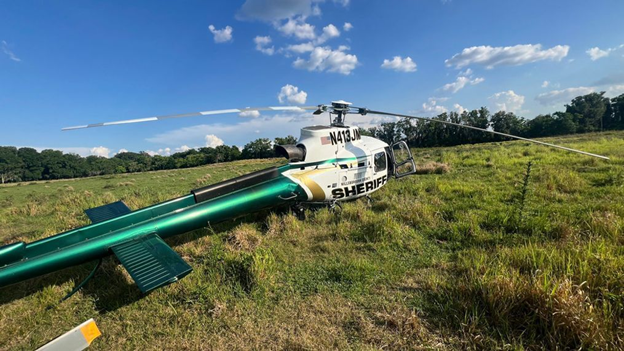

Eagle County Regional Airport will conduct a disaster drill on May 8 — you may see smoke
Drill will test readiness of emergency response units
Vail Daily staff report
The Eagle County Regional Airport will demonstrate its Airport Emergency Plan response by conducting a full-scale preparedness drill on May 8 from 8 a.m.-2 p.m.
The exercise will test the readiness of airport personnel, first responders, and coordinating mutual aid agencies with a simulated aircraft accident. The Federal Aviation Administration requires the Eagle County Regional Airport to conduct this exercise every three years. Official evaluators from neighboring airports and mutual aid agencies assess the local response and provide feedback on the effectiveness of the airport’s emergency procedures.
Smoke, emergency equipment, and vehicles may be visible at the airport on May 8. The public is reminded this is a simulated aircraft accident, it is not necessary to call 911.
“The exercise will be a major test of our response times, communication, and overall performance during an emergency. It will simulate an aircraft accident involving a Boeing 757, the largest aircraft type operating at (the airport) today,” Eagle County Director of Aviation David Reid said. “This is a valuable opportunity for our team to demonstrate how well-prepared they are and while we hope a crisis like this never occurs, we must always be ready to respond.”
https://www.vaildaily.com/news/eagle-county-regional-airport-will-conduct-a-disaster-drill-on-may-8-you-may-see-smoke/
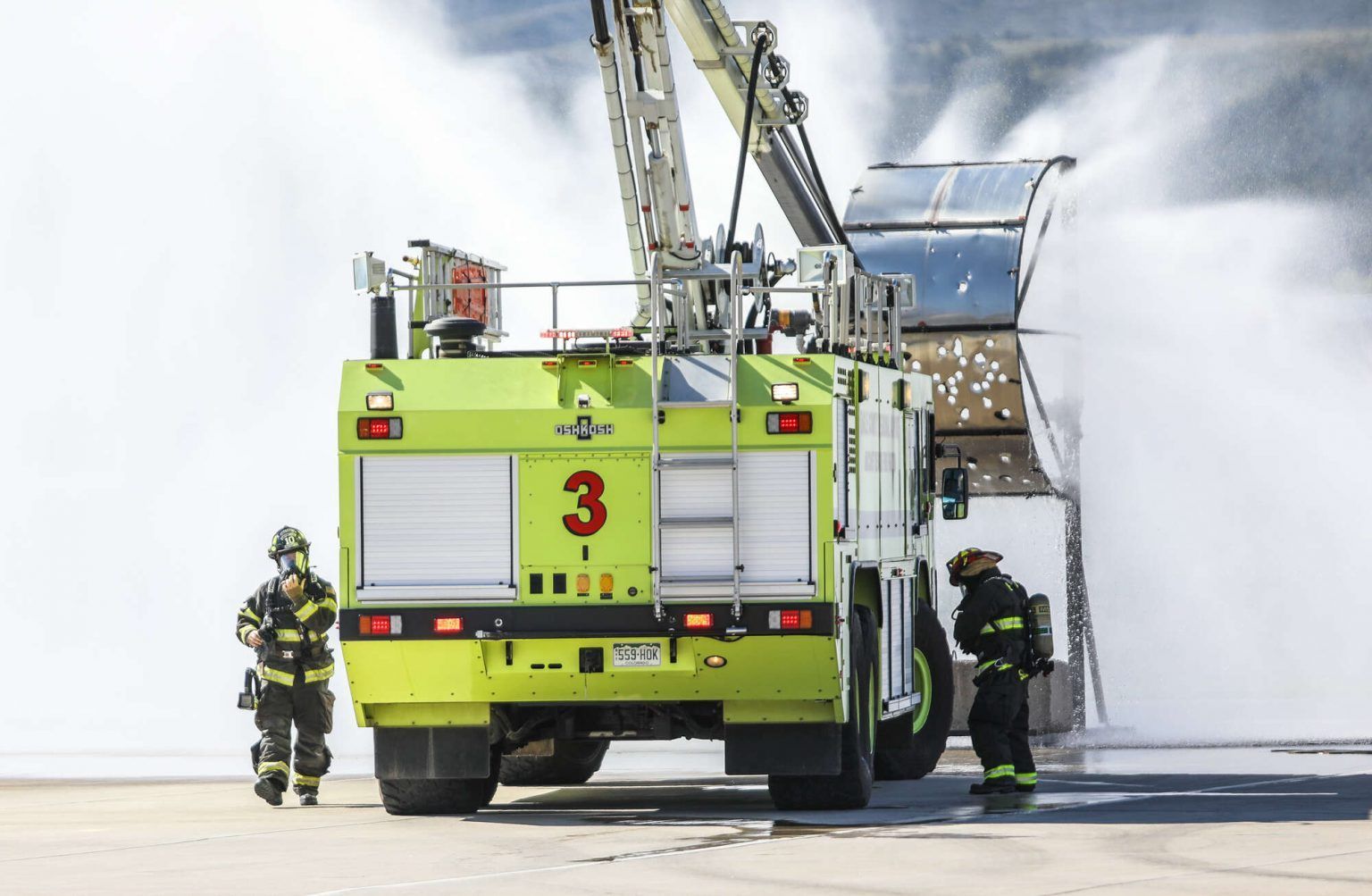
Boeing: Firefighters face lockout if no deal by Saturday
A labor dispute has heated up: Boeing filed an unfair labor practice complaint against the firefighters union and threatened a lockout.
By Janice Podsada - Wednesday, May 1, 2024
EVERETT — Boeing said late Tuesday it will lock out its union firefighters at facilities across the state unless a contract is ratified by Saturday.
About 125 Boeing firefighters — members of the International Association of Fire Fighters Local I-66 — are currently in contract negotiations with Boeing. Union members have rejected two previous contract offers. With no agreement, firefighters said this week they could have called a strike as soon as May 13.
“Since the union could give notice to strike at any time, we have been forced to spend considerable time and resources to ensure the continuity of operations,” Boeing said in a statement.
“With a potential for a strike, we have activated our contingency plan that includes the use of highly qualified firefighters,” the company continued. “If a contract is not ratified by 12:01 a.m. on May 4, we will lock out all members of the bargaining unit.”
Local I-66, which represents firefighters at Boeing facilities in Everett, Seattle, Renton, Auburn and Moses Lake, is seeking a deal that includes competitive pay and better staffing. About 40 firefighters work at Boeing’s aircraft assembly plant at Paine Field, according to union officials.
Boeing claims Local I-66 is not negotiating fairly.
“After two and half months of negotiations, including several sessions with an impartial federal mediator, the union continues to engage in bad faith bargaining,” the company said. “As a result we have filed an unfair labor practice charge with the National Labor Relations Board.”
Boeing shared its lockout plans with union members Tuesday afternoon, a day after dozens picketed outside the company’s facilities in Everett and Renton.
Still, the company said it wants to reach a deal with the union and will continue to bargain in good faith.
Dean Shelton, vice-president of the Washington State Council of Fire Fighters, said talks broke down after Monday.
“Boeing is insisting that this was their last and final offer,” Shelton said Wednesday. Shelton, in turn, accused the company of not bargaining in good faith.
As of Wednesday morning, no new talks have been scheduled between Boeing and the union before the midnight Saturday deadline, Local I-66 president Casey Yeager said in a statement.
“We presented Boeing with a reasonable, meet-in-the-middle proposal,” Yeager said. “Boeing refused to consider it. The company told us we’ll have to accept the offer we’ve already rejected twice, because we won’t get anything better. Now with this lockout threat, it’s trying to bully us into accepting a bad contract.”
“There hasn’t been a fire fighters strike anywhere in the United States since the ’80s,” Yeager added. “We’re fire fighters. It’s not what we do, but with this lockout, Boeing’s going on strike against us.”
Local I-55 called the threatened lockout a tactic to put financial pressure on employees who are considering a strike.
Industrial fire departments, like the ones Boeing maintains, are common among the mining, chemical, oil and gas and aviation sectors.
Boeing’s specialized firefighters are on hand every time a Boeing-built aircraft is fueled or takes off on a test or delivery flight. They also provide emergency medical services and conduct regular safety inspections at Boeing facilities. In an emergency, they cover the initial response and then coordinate with municipal firefighters. Municipal firefighters then assume command of the incident and have jurisdiction, the company said.
“Locking out your professional firefighters is of great concern for all of us and for the people who reside in those plants,” Shelton said. “Those plants are like small cities.”
Shelton said Local I-66 is willing to continue negotiations, but rejects the company’s current pay package and proposal that requires firefighters serve the company for 19 years before reaching the top pay grade.
By comparison, firefighters at municipal fire departments typically reach the top end after three to five years, union officials said. The union is proposing six years.
At the bargaining table, the two sides disagree on what standards should apply when it comes to pay and staffing levels.
“The union has repeatedly attempted to apply municipal fire department standards to Boeing’s industrial fire department despite the work being completely different,” the company said.
Boeing said its “competitive, market-based” contract offer includes pay raises and guaranteed annual wage increases that are on par or greater than industrial fire department levels. Its compensation package would boost pay an average of $21,000 per year, the company said.
Last year, the average take-home pay for a firefighter was $91,000, Boeing said.
“Our contract offer would significantly increase that figure,” the company said.
Still, firefighters said their pay is, on average, 20% less compared to regional fire departments and fire districts.
“We’re seeking pay parity,” said Shelton, of the firefighters council.
Boeing said the comparison doesn’t apply: “The union is using standards that do not apply to this bargaining unit.”
https://www.heraldnet.com/news/boeing-firefighters-face-lockout-if-no-deal-by-saturday/

NTSB Final (Modified): Robinson Helicopter R44
Loss Of Helicopter Control While Maneuvering, Which Resulted In Main Rotor Blade Contact With The Tailboom In Flight
Location: Rowlett, Texas Accident Number: CEN22FA151
Date & Time: March 25, 2022, 11:27 Local Registration: N514CD
Aircraft: Robinson Helicopter R44 Aircraft Damage: Destroyed
Defining Event: Loss of control in flight Injuries: 2 Fatal
Flight Conducted Under: Part 91: General aviation - Instructional
Analysis: **This report was modified on April 29, 2024. Please see the docket for the original report.**
According to the operator, the lesson syllabus for the instructional helicopter flight included emergency procedures, equipment malfunctions, and vortex ring state (VRS) recognition and recovery. Flight track data, video, and a witness statement indicated that the helicopter was maneuvering at slow speeds about 2,000 ft mean sea level in the minute before the accident and shortly before a 4-ft section of the tailboom separated and the helicopter entered a spiraling descent to the ground. The witness stated that the helicopter appeared to hover when the tail boom separated.
The 4-ft section of the tailboom which included the tail rotor came to rest on the roof of a commercial building about 300 ft from the main wreckage. Examination of the helicopter revealed that the main rotor elastomeric teeter stops were severely damaged, and the brackets were bent. The main rotor drive shaft displayed scuff marks where the teeter stops were damaged, consistent with extreme teetering of the main rotor. Main rotor blade contact marks and dents were consistent with the main rotor blades contacting the tailboom in flight, resulting in its separation. Examination of the helicopter and engine did not reveal any preaccident anomalies with the helicopter that would have precluded normal operation.
The syllabus for the accident flight included an introduction to VRS and given the flight track information and witness statement, it is possible that the flight instructor was demonstrating, or the pilot receiving instruction was performing, a VRS entry/recovery when the accident occurred. However, since detailed information regarding the helicopter’s flight control and engine parameters was not available, the exact maneuver being conducted at the time of the tail boom separation could not be determined. The main rotor’s contact with the tailboom is consistent with improper flight control inputs or low rotor RPM.
Toxicology testing of the flight instructor revealed the presence of bupropion, an antidepressant medication. Based on the available information, it could not be determined whether effects of the flight instructor’s bupropion use or an associated condition contributed to the accident. Toxicological testing of the pilot receiving instructionrevealed the presence of cetirizine, an antihistamine. It is unlikely that the effects of this medication contributed to the accident.
Probable Cause and Findings: The National Transportation Safety Board determines the probable cause(s) of this accident to be -- A loss of helicopter control while maneuvering, which resulted in main rotor blade contact with the tailboom in flight, tail boom separation, and an uncontrolled descent.
FMI: www.ntsb.gov

Today in History
54 Years ago today: On 2 May 1970 an ALM Douglas DC-9 ditched off St. Croix following fuel shortage; killing 23 out of 63 occupants.
Date: Saturday 2 May 1970
Time: 15:49
Type: McDonnell Douglas DC-9-33CF
Owner/operator: ALM - Antillean Airlines
Registration: N935F
MSN: 47407/457
Year of manufacture: 1969
Total airframe hrs: 2505 hours
Engine model: Pratt & Whitney JT8D-9
Fatalities: Fatalities: 23 / Occupants: 63
Aircraft damage: Destroyed, written off
Category: Accident
Location: 48 km ENE off St. Croix, Virgin Islands [Caribbean Sea] - Atlantic Ocean
Phase: En route
Nature: Passenger - Scheduled
Departure airport: New York-John F. Kennedy International Airport, NY (JFK/KJFK)
Destination airport: Sint Maarten-Juliana Airport (SXM/TNCM)
Investigating agency: NTSB
Confidence Rating: Accident investigation report completed and information captured
Narrative:
ALM flight 980, a McDonnell Douglas DC-9-33CF, ditched into the Caribbean Sea after running out of fuel. Forty of the 63 occupants survived the accident.
The aircraft was being operated under terms of a lease agreement by Overseas National Airways (ONA) on behalf of ALM - Antillean Airlines. Flight 980 was a regular service from New York-JFK International Airport to Juliana Airport on the island of St. Maarten.
Prior to departure the captain calculated that the flight would burn 21000 pounds of fuel. The total amount of fuel on board was 28900 pounds, which translated to an endurance of 4 hours and 34 minutes.
Bulletins received by the captain on the morning of the flight established a new company requirement for fuel planning purposes. The minimum estimated fuel on arrival at destination (EFA) for a nonstop flight to St. Maarten was established as 7000 pounds, which meant the aircraft's fuel exceeded the planned requirements by 900 pounds.
Flight to St. Maarten
The flight left the terminal at 11:02 hours local time and departed on runway 13R at 11:14. At the time power was applied for takeoff, the fuel totalizer read 28450 pounds. The aircraft climbed to the initial cruising altitude of FL290.
At 13:36 the aircraft descended to FL270 followed by a descent to FL250 due to turbulence.
At 14:24, the flight passed Guava Intersection, approximately 211 miles north of St. Maarten, with 8600 pounds of fuel on board. The captain estimated that they would arrive at St. Maarten at 15:00 with 6000 pounds of fuel.
Shortly after ALM 980 was given a final descent clearance to 10000 feet, San Juan Air Route Traffic Control Center (ARTCC) advised that the St. Maarten weather was below landing minimums. The captain requested a repeat of that information and then asked for clearance to San Juan at FL210. At 14:45, the flight diverted for San Juan. However, during the next five minutes, Juliana Tower at St. Maarten advised the flight that the weather had improved to an estimated ceiling of 1000 feet broken, 5000 feet overcast and 4 to 5 miles visibility in rain. With these weather conditions, flight below 1000 feet presumably could be accomplished by visual reference to the ground. The flight was given a new clearance to St. Maarten at 14:51, with permission to descend to 10000 feet at pilot's discretion. The captain noted at this point that 5800 pounds of fuel remained, and estimated that they could arrive at the ramp at St. Maarten at 15:05 with 4400 pounds of fuel. ALM 980 was cleared to descend to 6000 feet, and subsequently cleared for an approach to Juliana Airport at approximately 15:00.
At approximately 15:08, the flight reported level at 2500 feet and the tower controller advised that the weather was 800 feet scattered, estimated ceiling 1000 feet broken, 5000 feet overcast, visibility 2 to 3 miles. The crew commenced the approach at 15:15, and they were cleared to make any turns desired in case of a missed approach. On this approach the crew did not sight the runway in sufficient time to align the aircraft for a landing, and a left turn was made to reposition the aircraft, by visual reference to the ground, for another landing attempt at approximately 15:19. This attempt was also unsuccessful because of poor alignment with the runway. During both of these approaches, the aircraft had been flown with 25° flaps, landing gear down, and 140 knots airspeed.
After the second landing attempt was aborted, the captain selected full flaps and maintained 128 to 130 knots airspeed for the third approach. On this occasion, he was successful in aligning the aircraft with the runway, but he was too high and close in to maintain the proper descent profile without reducing power below acceptable limits. The captain stated that during the approaches a moderate rain shower was in the area where he was turning on a base leg, but generally visual contact with the field was maintained.
The weather remained relatively unchanged throughout this period.
Following the third unsuccessful attempt to land, the captain returned to the St. Maarten NDB and elected to divert to St. Thomas.
Low on fuel
The flight was cleared to St. Thomas via direct route at 4000 feet by the Juliana Tower and, at 15:31 ALM 980 was instructed to contact San Juan ARTCC. The captain testified that during the climb to 4000 feet the fuel gauges and totalizer were erratic, but the totalizer indication stabilized momentarily at 850 pounds while the aircraft was level at 4000 feet.
The captain stated that fuel cross-checks had been made en route, and no discrepancies had been noted until after the departure from St. Maarten. His last recollection of fuel quantity was 3800 pounds, which he testified he had observed when the aircraft was on the downwind leg of the third landing attempt. He testified that after the reading of 850 pounds was observed, the crew concluded that this was an erroneous reading.
Radio contact with San Juan ARTCC was established at 15:31. The flight was cleared to FL120, and during the climb requested clearance to St. Croix, which was 11 miles closer. The captain indicated that he used reduced power and airspeed in the climb in an effort to consume less fuel. At 15:38, in response to a request to descend, the flight was cleared to 5000 feet.
Less than 1 minute later, the captain reported to the San Juan controller, "Okay theres a possibility I may have to ditch this aircraft, I am now descending to the water." He also called the purser forward and told him to prepare the cabin for ditching. During the next several minutes, the crew inquired about their position and the availability of assistance, and they were apprised of the rescue efforts which were already in progress.
Ditching and evacuation
At 15:47, they stated, "Nine eighty roger... ah... were ditching." The captain leveled off momentarily at 500 feet and positioned the aircraft over an established 'swell system.' He then descended in 100-foot increments, pausing momentarily to improve his depth perception. At approximately 20 feet, he lowered 15° flaps and allowed the airspeed to decrease from the previously maintained value of 145 to 150 knots.
When the low fuel pressure lights flickered, he selected full flaps. Shortly after this, the engines flamed out, and he flew the aircraft onto the water at approximately 90 knots while maintaining the aircraft body angle at 5-6° noseup.
Following impact, the purser and the navigator attempted to open the forward main passenger door, but found it to be jammed and inoperable. These two crewmembers then moved to the galley area where a third crewman, the steward, had already opened the galley exit door and at least one passenger had made her escape through the galley door. The three crewmen attempted to free the raft from the galley equipment which had spilled to the galley floor. They had just been joined by the first officer in this effort when the raft inadvertently inflated. The inflated raft pinned the first officer to the galley bulkhead, and prevented the other crewmembers from entering the main cabin area. These four crewmembers exited through the galley door. The captain was aware of the difficulties in the galley area, and entered the water through the cockpit window. He swam to the left overwing exits, opened them from the outside, and assisted two passengers out of the aircraft. The captain then glanced through the cabin for additional passengers but saw none. Most of the passengers exited through the aft right overwing exit, which was opened by a passenger who was seated next to it.
The navigator found an emergency escape slide floating in the water and, with the help of a female passenger, inflated it. The first officer, who had no lifevest, climbed on top of the slide and assumed command of the main group of survivors who gathered around the slide. Belts and ties were used to provide additional handholds for the people.
Although none of the five 25-man rafts on board the aircraft was deployed, several rafts were air-dropped at the ditching site. The U.S. Coast Guard Grumman HU-16 Albatross, an amphibian aircraft, dropped two rafts but both fell too far away to be reached. In addition, a Skyvan dropped two rafts in the area. The captain swam to one raft and the navigator reached the other, but neither was able to maneuver his raft back to the main group.
Recovery of the survivors by helicopter began approximately one and a half hours after the ditching, and the last survivor, the first officer, was picked up about 1 hour later.
Weather in the area during the rescue operation was estimated to be 400 to 500 feet overcast and visibility as low as three-eighths of a mile in rain. The aircraft sank in water more than 5000 feet deep, and was not recovered.
PROBABLE CAUSE: "The Board determines that the probable cause of this accident was fuel exhaustion which resulted from continued, unsuccessful attempts to land at St. Maarten until insufficient fuel remained to reach an alternate airport. A contributing factor was the reduced visibility in the approach zone because of rain showers, a condition not reported to the flight. The Board also finds that the probability of survival would have been increased substantially in this accident if there had been better crew coordination prior to and during the ditching."

Mailing Address
Subscribe to our newsletter
Contact Us
We will get back to you as soon as possible.
Please try again later.
